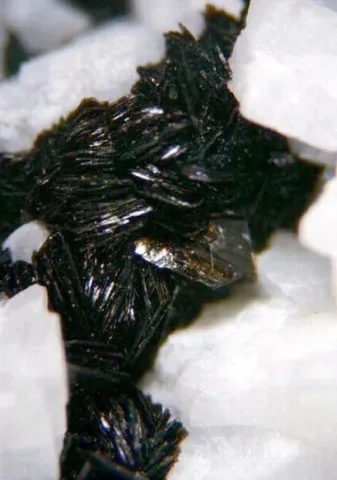ROSCOELITE
Class : Silicates
Subclass : Phyllosilicates
Crystal system : Monoclinic
Chemistry : KV2AlSi3O10(OH)2
Rarity : Uncommon
Roscoelite is a vanadium mica, with a structure identical to that of muscovite with which it forms a continuous series, vanadium replacing aluminum in the octahedral sites. It is a hydrothermal mica formed in epithermal gold deposits where it accompanies native gold, fluorite and rhodochrosite. It is also found in the oxidation zone of uranium-vanadium deposits in sedimentary contexts. It was named in honor of Henry Enfield Roscoe, Professor of Chemistry at the University of Manchester. Roscoelite forms tiny crystals grouped in rosettes, scaly or flabelliform aggregates, or felt-like encrustations, dark brown to dark greenish brown in colour. It is one of the few vanadiferous minerals that resists weathering. It is locally an ore of vanadium.
Main photo : Roscoelite from Gambatesa Mine, Liguria, Italy © Gianluca Armellino
Roscoelite in the World
Twinning
No known twinning for this mineral species.
Fakes and treatments
No fakes listed for this mineral species.
Hardness : 2.5
Density : 2.92 to 2.94
Fracture : Micaceous
Streak : White
TP : Translucent to transparent
RI : 1.590 to 1.704
Birefringence : 0.050 to 0.094
Optical character : Biaxial -
Pleochroism : Visible
Fluorescence : None
Solubility : Hydrochloric acid
Magnetism : NoneRadioactivity : None

